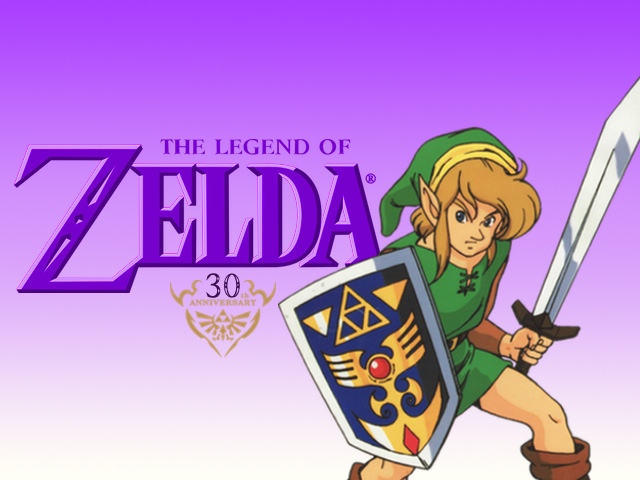
Day two of our Zelda retrospective has arrived, with our focus now shifting from the series’ halcyon days to the beginning of its more toon-centric era. This period of time saw some important developments in the franchise; read on to find out what they were!
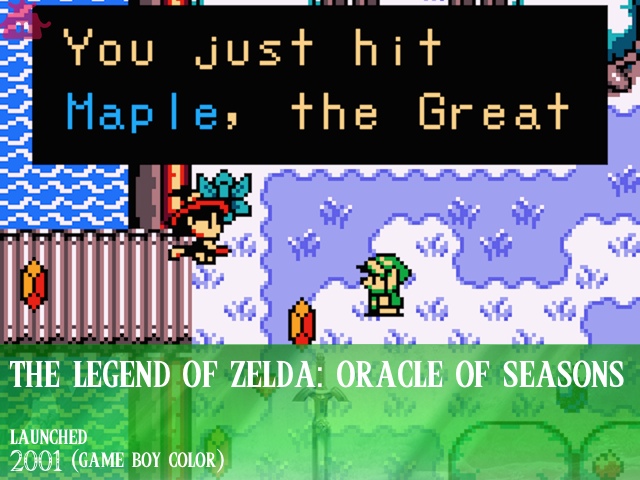
It’s shocking to think that Nintendo would let a third-party developer like Capcom create a single Zelda game, let alone two, but that’s exactly what happened when the companies partnered to produce Oracle of Ages and Oracle of Seasons. Originally intended to be an interlocking trilogy of titles, the three games were pared down to two, but the connectivity remained. Passcodes from one title could be taken and used in the other, ultimately leading to second quests for both… and one heck of a guest star at the end. The Oracle games came at the birth of the Game Boy Advance era, and plugging the titles into one of the then-new handhelds would unlock access to special content that couldn’t be reached when played on a Game Boy Color. The two games are both excellent, though there are those who assert that Oracle of Ages is the more cerebral of the pair. Whether playing Oracle of Ages or Oracle of Seasons, it was apparent to consumers that the team at Capcom was clearly comprised of passionate Zelda fans, as the quality on display was nearly equal to what Nintendo itself could have accomplished with the games on its own.
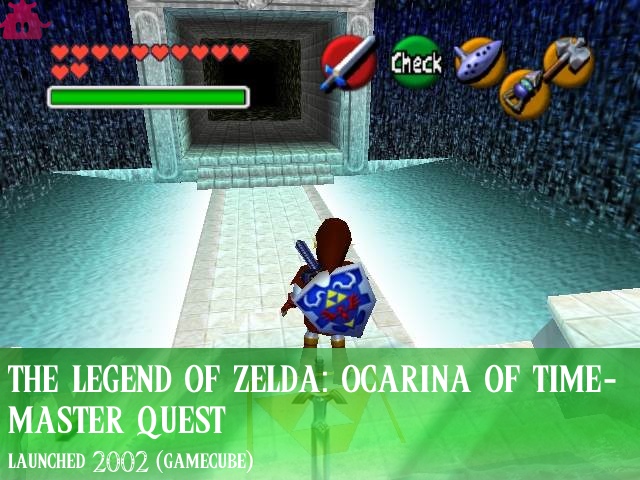
Prior to the release of Ocarina of Time Master Quest, the video game world was still reeling from the presentation of The Wind Waker at E3 2002, where Nintendo had revealed that the next Zelda game was going to be rendered in a cel-shaded style reminiscent of a cartoon. Fans balked at the change, especially after having been treated the previous year to a tech demo of a highly realistic looking battle between Link and Ganon. In what can only be assumed to have been an attempt at damage control, Nintendo released this special GameCube copy of Ocarina of Time Master Quest for those who preordered copies of The Wind Waker. Master Quest was a reworked version of Ocarina of Time that offered a steeper difficulty level and reworked dungeons, and was originally intended to be released on Nintendo’s failed add-on device Nintendo 64DD. Though Wind Waker would eventually win players over by virtue of its excellent gameplay, Master Quest was still a suitable peace offering that allowed fans the chance to return to one of their most beloved entries in the series and experience it in a new and different way.
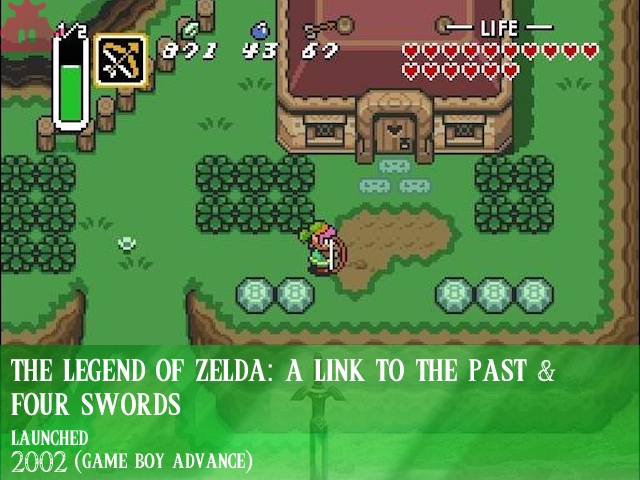
A Link to the Past seemed like a perfect fit for Game Boy Advance, which was home to numerous SNES ports. Having the chance to take one of the greatest Super Nintendo games on the road was irresistible to fans, but they were treated to a little something extra in the form of the addition of Four Swords. A first for the franchise, Four Swords offered multiplayer Zelda action with the use of a Link Cable. Four Links had to work in tandem to solve puzzles, and fans the world over discovered just how much fun it could be tossing one another into bottomless chasms! Up to four players could join in the Capcom-developed multiplayer aside, and completion of its quest unlocked access to the secret dungeon Palace of the Four Sword, as well as the opportunity to begin the quest for the Whirlwind Blade attack in A Link to the Past. For those with an extra friend to access Four Swords, it was a fantastic update to an already superb title.
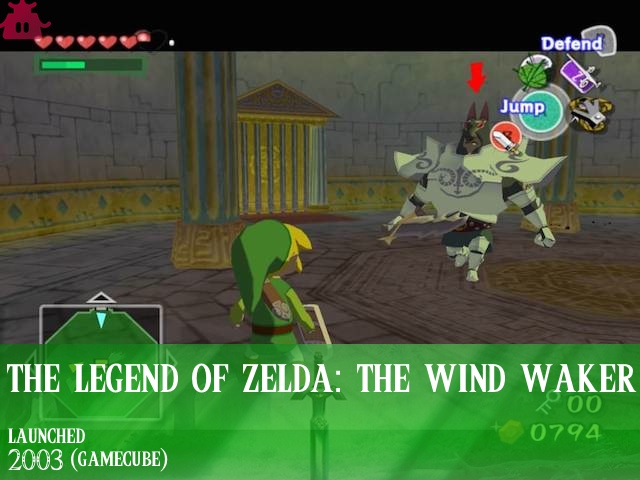
Almost universally derided based on its Spaceworld debut alone, many fans and critics alike found themselves eating crow after Wind Waker finally hit store shelves. It was, in a word, incredible. Utilizing the muscle of GameCube to render a lush and detailed game world that appeared as though it was stripped straight from a cartoon, The Wind Waker looked like nothing else on the market. Even compared to the eventual HD remake that landed on Wii U years later, this is a game that still doesn’t look dated by today’s standards. The Wind Waker also offered one of the most compelling narratives yet seen in the series, throwing many Zelda conventions by the wayside with its stunning reveal of what lurked beneath the game’s enormous ocean. Though some were dismayed by the long voyages at sea between destinations, Nintendo’s daring break from tradition to try and deliver something unique from the Zelda universe was an undeniable success. Also: Toon Link! Love that kid!
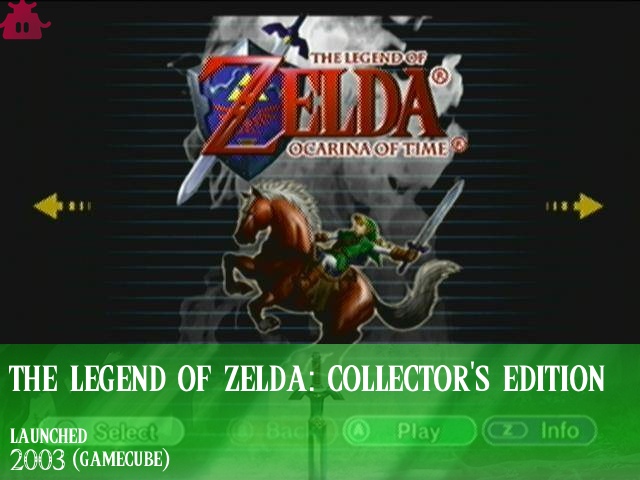
Assembling The Legend of Zelda, Zelda II, Ocarina of Time, and Majora’s Mask onto a single disc would seem like a winning recipe for selling a ton of copies, but Nintendo being Nintendo, the company went a completely different route with Collector’s Edition and released it instead as a promotional reward! The game could be obtained two different ways: by subscribing to or renewing a subscription to Nintendo Power, or by purchasing a GameCube and registering the system along with two of four select games with the My Nintendo online loyalty program. The game also came with a 20 minute demo of The Wind Waker and a history section detailing the Zelda series up to that point. Majora’s Mask had some performance issues, but otherwise Collector’s Edition was a spectacular greatest hits of sorts that satisfied many fans. Though not available in stores, the Zelda faithful did everything they could to get hold of Collector’s Edition, and it went on to be highly desirable in used games stores like GameStop for many years afterwards. Interestingly, this promo-only game actually had an official Nintendo Player’s Guide produced for it, which was a first for the company.
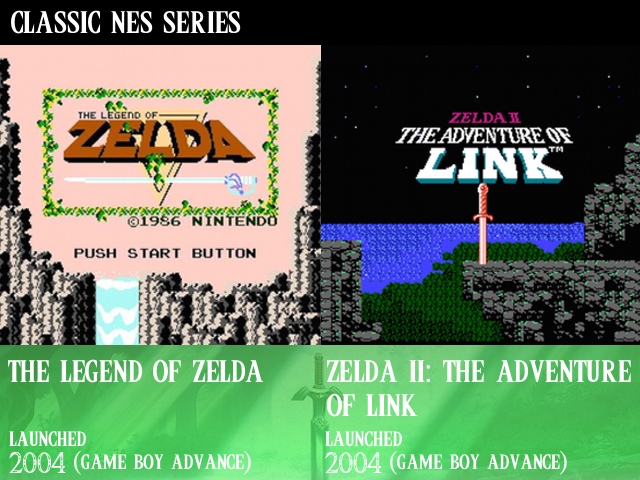
There was no Nintendo Network offering Virtual Console games back in 2004, so the opportunities to replay classic titles was quite limited at the time. In an effort to help fans relive the glory days of ’80s gaming (and make a handy profit– Nintendo charged full price for these things!), Nintendo released its Classic NES series of titles on Game Boy Advance, which offered a selection of games from its original home console. Along with the likes of Excitebike and Super Mario Bros., The Legend of Zelda and Zelda II became portable in their original forms for the first time. For newer players, it was an exciting introduction to the early days of the series, and for longtime fans it was a welcome return to some retro classics. The novelty of being able to play everything from Ocarina of Time and A Link to the Past on a whim is lost on some players today, but when the Classic NES line hit Game Boy Advance, it was truly shocking to be able to play games that for so long had been very hard to get. These two versions of The Legend of Zelda and Zelda II also brought with them fresh updates to their English translations– though some grammatical quirks still remained, nonetheless.
That brings us to the close of the second part of our Legend of Zelda retrospective! Come back tomorrow for part three, and let us know your memories and thoughts about this batch of games in the comments!




 ShareThis
ShareThis





